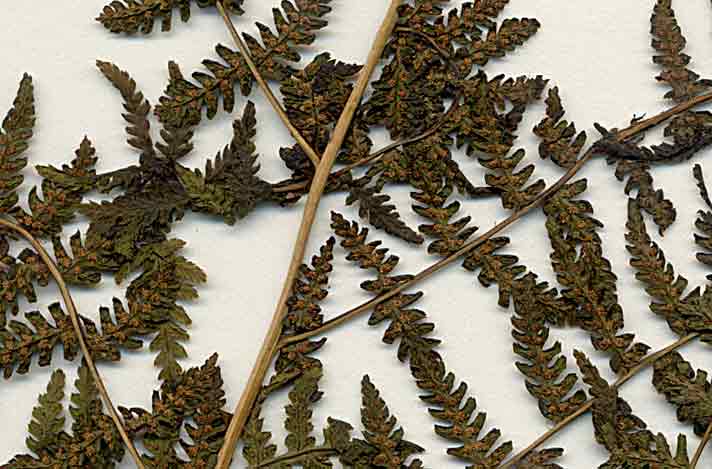|
Dryopteris dilatata
|
|
Trees and Shrubs of Kern County (Jan 2013, July 2015) Dryopteris arguta (Aspidium arguta Kaulfuss 1824) Maxon 1921. Marginal wood fern. Fronds erect-spreading from a thick woody underground stem, to 1 m long, blade-like portion twice pinnately divided at least in lower half, the ultimate leaflet-like segment (pinnae) relatively short and broad, 2–3× longer than wide, more lobed and wider towards base, variously incised along margins; sori thick, horse-shoe shaped, in two rows along under side of pinnule, covering most of the pinnule, indusiate. Moist places, mostly near the coast, British Columbia to south California, less frequently along the western slopes of Sierra Nevada, disjunct occurrences south to near Santo Tomas in northern Baja California and in Arizona, absent in the California deserts. Type from California. Kern Co. “Occasional, in shaded usually moist places, from the shin oak brush to the yellow pine forest in the Greenhorn range and on Breckenridge Mountain; uncommon in similar places in the Tehachapi Mountains” (Twisselmann), 610–2133 m (CCH). The genus Dryopteris includes ~250 species. Root- rhizomes of four species (not D. arguta) used by native Americans for treating toothaches, worms, stomach troubles and shellfish poisoning (Moerman). Dryopteris amplissima (Polystichum amplissima C. Presl 1836) Kuntze 1891 root-leaf collected in Brazil was active in KB (Dec 1976). Species contain phloroglucinol derivatives that have shown bioassay activity against various in vitro cancers (PubMed).
|

